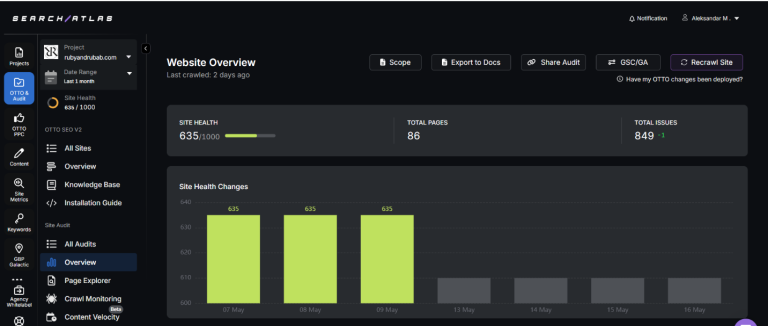Table of Contents:
- Understanding Talent Sourcing and Its Importance in Business
- The Evolution of Talent Sourcing
- Strategies for Identifying High-Potential Candidates
- The Benefits of a Robust Talent Sourcing Process
- The Role of Technology in Streamlining Talent Sourcing
- Overcoming Challenges in Talent Sourcing
- Measuring the Efficacy of Talent Sourcing Efforts
- Conclusion: Integrating Talent Sourcing into Strategic HRM
Understanding Talent Sourcing and Its Importance in Business
Talent sourcing stands at the frontier of strategic human resource management. It is a multi-faceted process beyond mere recruitment to encompass the proactive identification, engagement, and nurturing of potential candidates who could significantly contribute to a company’s workforce. This anticipatory approach to hiring is essential, for it creates foundational talent pipelines that can quickly be mobilized to meet organizational needs as they arise. Embedding candidate sourcing into the corporate culture has shown definitive benefits, notably the acceleration of hiring cycles and the enhancement of employee quality, collectively contributing to robust business growth and a material competitive edge in the marketplace.
Talent sourcing is so important that a company’s ability to innovate and remain agile in a fast-paced environment can only be protected with it. A strategic sourcing initiative positions HR professionals as integral players in organizational planning, aligning recruitment processes with broader business objectives, and setting milestones in performance improvement and market leadership. It is an activity that requires finesse, an understanding of the market dynamics, and, crucially, a sense of timing to engage with prospective candidates when they are most receptive.

The Evolution of Talent Sourcing
If we trace the history of talent sourcing, we find a reactive process—a waiting game where employers post vacancies and hope for the best candidates to apply. Not anymore. The evolution of sourcing is marked by a shift towards strategic, proactive engagement, where companies actively seek out candidates. This radical change has been largely fueled by digital technologies that enable recruiters to scour online profiles, connect through social media, and host virtual career fairs that reach candidates globally. This digital transformation requires sources adept at brand representation and relationship building, keeping in mind that every interaction reflects the employer’s values and ethos.
Yet, this transformation is not solely about leveraging technology; it is about understanding the workforce landscape and injecting dynamism into recruitment strategies. Sourcing has become a continuous process—a progressive cycle that doesn’t diminish when roles are filled. Recruiters are now talent curators, departing from the transactional approach of filling vacancies to a relational talent engagement and community-building model. It invites a change in mindset, where foresight and agility are prized competencies in the expanding tapestry of modern business practices.
Strategies for Identifying High-Potential Candidates
A crucial element of successful talent sourcing is identifying candidates with high potential—that elusive combination of skill, experience, and cultural fit that can propel an organization forward. Social media platforms have emerged as fertile ground for this undertaking. LinkedIn, for instance, has transformed into a hub where passive candidates—those not actively seeking a change but open to opportunities—can be engaged and nurtured for future roles. Yet, finding these candidates among the digital noise requires strategic use of algorithms and search functionalities designed to filter the exceptional from the average.

The Benefits of a Robust Talent Sourcing Process
Beyond immediate gains in diversity and innovation, a robust talent-sourcing process offers a more sustainable recruitment framework. Organizations can reduce the time and cost associated with hiring by developing a nurturing and engaging relationship with potential candidates. Particularly within industries where the competition for top talent is fierce, effective sourcing can be the deciding factor that positions a company as an employer of choice, which can standardize excellence across the organization.
The Role of Technology in Streamlining Talent Sourcing
The technological renaissance in talent sourcing has seen the advent of Applicant Tracking Systems (ATS) and Customer Relationship Management (CRM) platforms that have transformed the efficiency and scope of recruiting efforts. These systems embody the strategic alignment of technology and talent, optimizing recruitment pipelines and fostering a data-rich environment from which informed decisions on candidate engagement and hiring can be drawn. However, the true value of these systems lies in their ability to create time—time that recruiters can invest in personal interactions and candidate nurturing that technology cannot replicate.
Advances such as artificial intelligence (AI) and machine learning are now reinforcing the recruitment process, providing predictive insights that can elucidate potential hiring successes and identify passive candidates who may be on the cusp of seeking new opportunities. These technologies, however impressive, must be harnessed with the acknowledgment that recruitment, at its core, is a profoundly human endeavor. Acknowledging candidates’ values, goals, and potential contributions requires a discernment that technology can inform but not replace.
Overcoming Challenges in Talent Sourcing
The trajectory of talent sourcing is rarely linear and unburdened by obstacles; challenges such as skill gaps, hyper-competitive markets, and evolving candidate expectations are commonplace. Navigating these challenges demands agility and creativity in strategy formulation. With an eye on employer branding, companies can differentiate themselves, ensuring their proposition to potential candidates is as compelling as possible. This branding transcends mere benefit packages—it’s about representing a culture, a mission, and values that resonate with high-caliber talent.
Strategies to traverse these challenges include:
- Crafting a unique employee value proposition (EVP).
- Expanding into untapped talent pools.
- Leveraging the power of digital tools to facilitate a global reach.
It is also integral to learn from other organizations’ experiences, adopt effective practices, and tailor these to the unique context and needs of one’s own company.
Measuring the Efficacy of Talent Sourcing Efforts
Assessing the impact of talent sourcing requires a robust framework of analytics and metrics. By measuring key performance indicators (KPIs) such as time-to-hire, cost-per-hire, and employee retention, HR professionals can glean insights into the strengths and weaknesses of their sourcing efforts. Qualitative measures such as candidate satisfaction and hiring manager feedback also serve as vital yardsticks, offering a holistic appraisal of the recruitment process. Appropriate data collection and analysis afford a comprehensive understanding of sourcing efficacy, pointing to potential improvements and opportunities for innovation in recruitment practices.
Metrics and analytics provide an empirical foundation, but a culture of feedback and iteration fuels continuous improvement. Engaging with new hires to understand their candidate journey, alongside consultations with hiring managers regarding the suitability and performance of new employees, generates a feedback loop that can dramatically refine talent-sourcing processes over time. This iterative approach ensures that sourcing strategies align with organizational goals and ever-evolving industry trends.
Conclusion: Integrating Talent Sourcing into Strategic HRM
Talent sourcing must be transformed from a standalone task to an integral part of strategic human resource management to achieve organizational excellence.
In conclusion, the fabric of an organization is undoubtedly influenced by the threads of its workforce. Talent sourcing—practiced with strategic intent, a forward-facing vision, and a blend of technological efficiency and humanistic touch—stands as a cornerstone in weaving the tapestry of a sustainable, successful enterprise. It is a pivotal component within the broader human resources narrative, continually shaping the plotline toward outstanding business outcomes.





Comments are closed.